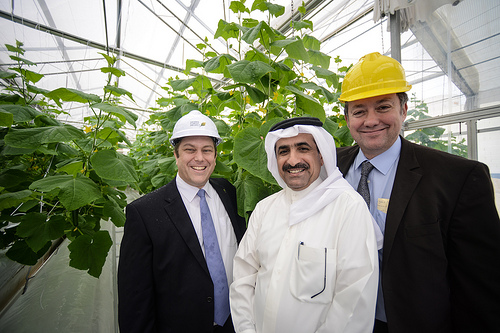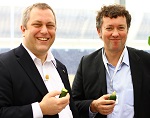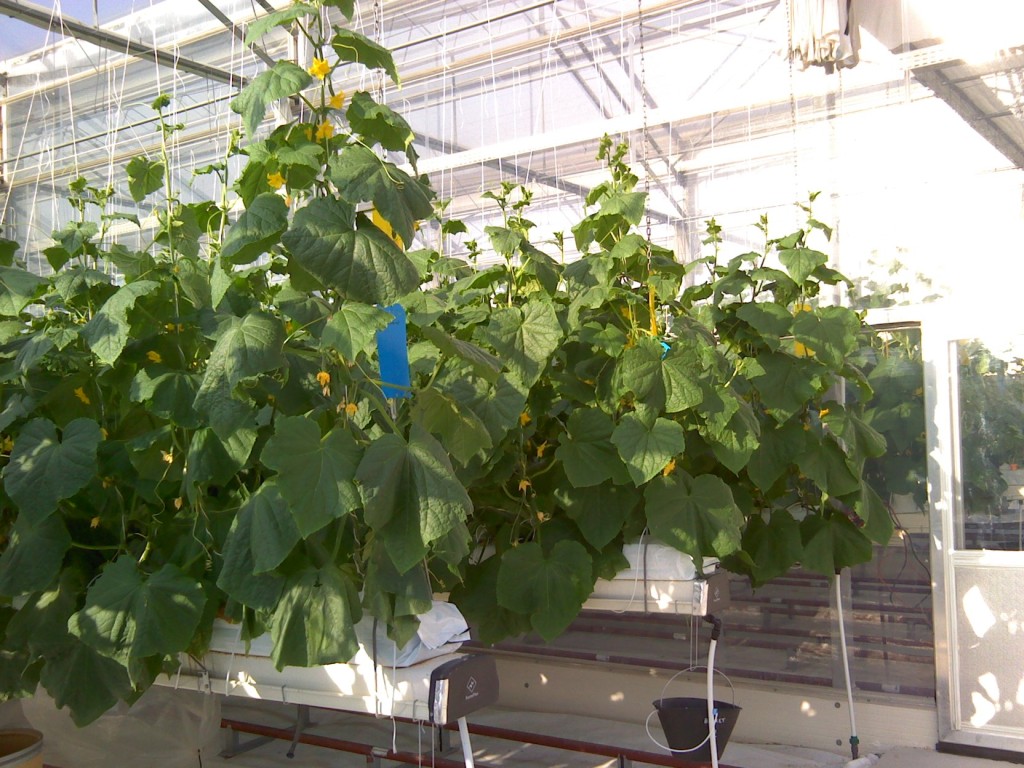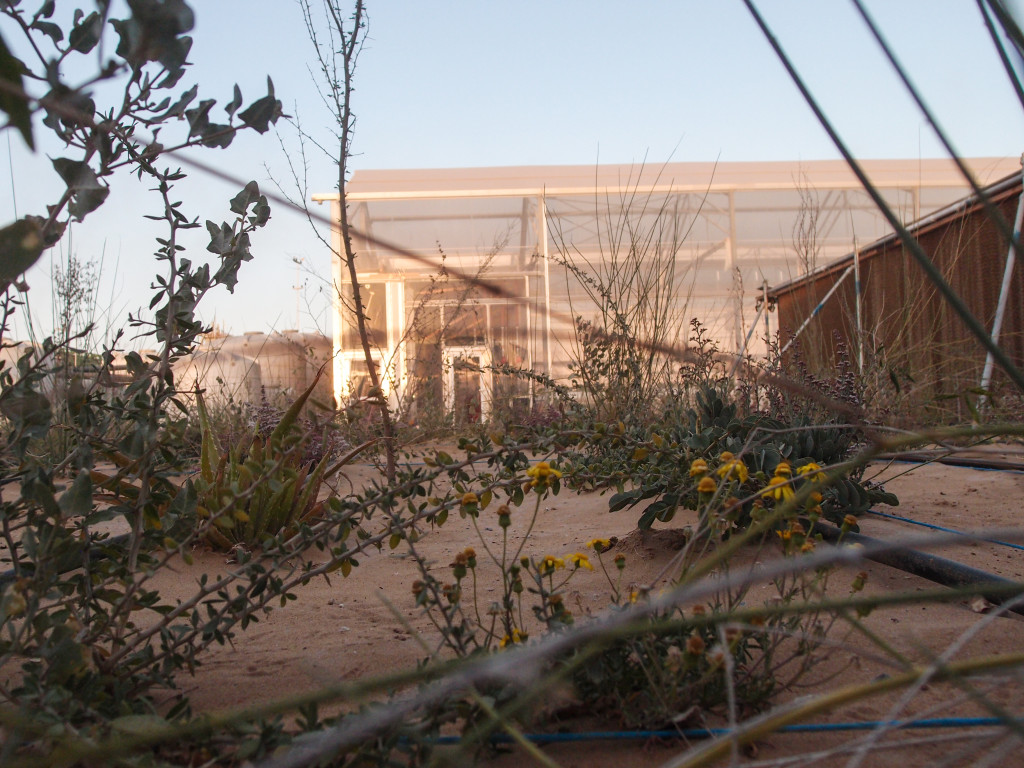
From left: Joakim Hauge, CEO of The Sahara Forest Project, Humoud Al-Mannai, CTO of Qafco, and Pierre Herben, CTO of Yara International. The Sahara Forest Project Pilot Facility in Qatar has successfully met expectations. The key findings from ten months operation prove the concept is effective and competitive.

The Sahara Forest Project pilot facility in Qatar is a partnership between Yara International ASA, Qatar Fertilizer Company (Qafco) and The Sahara Forest Project.
Through two and a half years of studies, field testing and operations, a solid foundation is now in place for enabling the roll-out of The Sahara Forest Project .
“Announcing key findings from the pilot facility we realized together with Qafco and Yara, is a proud moment in the development of The Sahara Forest Project. The remarkable results demonstrated on the ground reveal the potential for enabling restorative growth and value creation in arid land”, says Joakim Hauge, CEO of The Sahara Forest Project.
“The Sahara Forest Project Pilot Facility in Qatar is the proof of concept that it is possible to solve global issues linked to environment, food security and better use of resources using available technologies. As Yara, we are proud of having contributed through a very professional partnership with Qafco and Sahara Forest Project to the concept elaboration, pilot construction and prototyping of this great idea”, says Pierre Herben, Chief Technology Officer of Yara International.

“We see this prototype as an enabler to solve food security issues in lands hit by desertification, but as well as a tool to eradicate poverty through job creation on the large scale”, say Herben and Humoud Al-Mannai, Chief Technology Officer of Qafco.
In addition to the three partners, scientific researchers from Qatar, the MENA region, Europe, and the United States has participated in the scientific platform provided by the Pilot Facility.
Key findings
The results demonstrate that there are significant comparative advantages using saltwater for the integration of food production, revegetation and renewable processes:
· The seawater-cooled greenhouse has proven to be highly productive. The yields are competitive with those in commercial operations in Europe. Current yields indicate three crops a year will produce at least 75kg/m2 and that significantly higher yields can be achieved in a commercial set-up. The seawater cooling system supports production of high-quality vegetables throughout the Qatari summer, and reduces freshwater usage to less than half that of comparable greenhouses in the region.
· Solar and desalination technologies were successfully integrated as designed into the SFP system, indicating the technology interconnections will work at larger scale. Synergies with the greenhouse and evaporative hedges performed to provide wet-cooling efficiencies without cooling towers.
· The external evaporative hedges function as designed providing cooling of up to 10 degrees for agricultural crops and desert revegetation. Vegetable and grain crops grow outdoors throughout the year. Useful desert plants grow rapidly when cultivated with small quantities of water and nutrients.
· The saltwater infrastructure makes possible many concept extensions. Salt was produced as the end product of the saltwater value chain in large evaporative ponds. Commercially interesting algae showed good tolerance to heat and high evaporation rates. Halophytes useful as fodder or bioenergy grew successfully on pure seawater through the summer, and innovative saltwater irrigation systems operated without clogging or corrosion.

“The pilot has enabled to confirm a model and build the experience necessary to scaling-up of such farming concept and wouldl provide large scale partners with necessary data to test the commercial viability of the concept”, says Pierre Herben, Chief Technology Officer of Yara International.
“Good greenhouse performance and yields year-round, thriving outdoor crops and characterizations of the integrated Sahara Forest Project system confirm the robustness and suitability of the design for large-scale commercial operation in desert environments. This creates commercial opportunities for the near-term production of competitive products and enhanced profitability with future economies of scale”, says Joakim Hauge, CEO of The Sahara Forest Project.
Food production in Qatar
The pilot operations have verified the viability of profitable large scale greenhouse production in Qatar. Production is possible all 12 months of the year. High quality and efficient production can be realized with half the fresh water usage than in comparable greenhouses. The proven production of the system creates business opportunities:
· With 8 hectares of greenhouse production SFP will match the yearly import of cucumbers to Qatar
· With 40 hectares of greenhouse production SFP will match the yearly import of tomatoes to Qatar
· With 60 hectares of greenhouse production SFP will match the yearly import of cucumbers, tomatoes, peppers, and aubergines to Qatar
About The Sahara Forest Project
The Sahara Forest Project is a new environmental solution to create re-vegetation and green jobs through profitable production of food, water, clean electricity and biomass in desert areas. Sahara Forest Project takes what we have a enough of to create what we need more of, using CO2, salt water, sunlight and arid areas, to produce energy, fresh water, vegetation and food.
Read Science Magazine’s coverage of the results and Sahara Forest Project here:http://news.sciencemag.org/asiapacific/2013/11/desert-farming-experiment-yields-first-results
